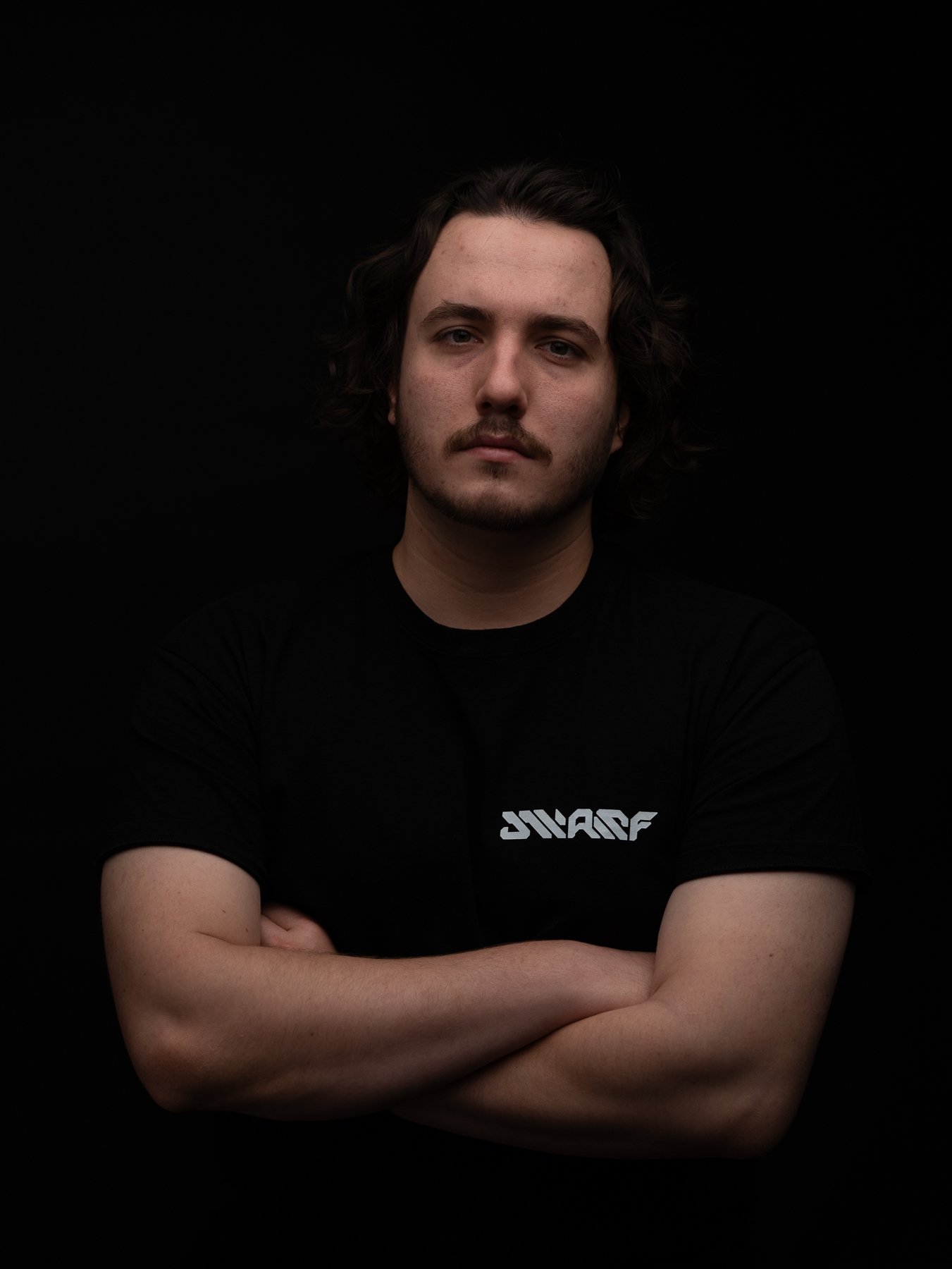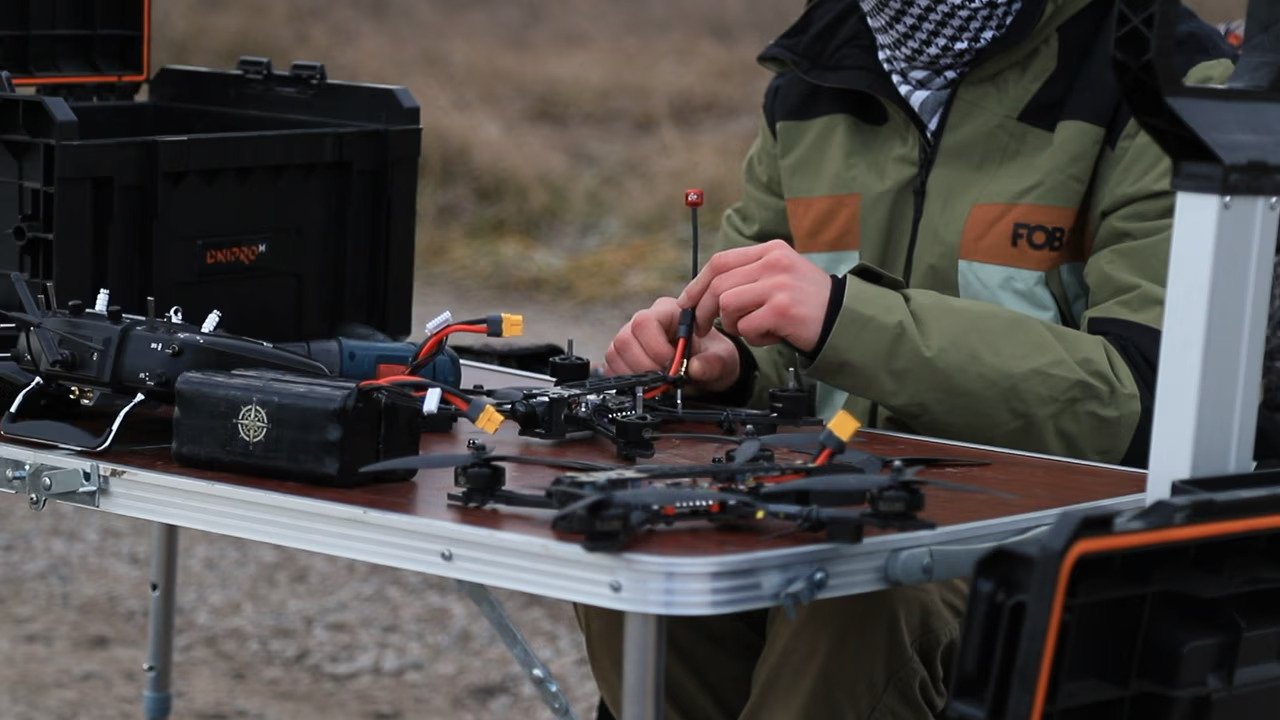The defencetech sector has boomed since Russia’s full-scale invasion of Ukraine. Many companies have now completed product development and beta testing, but they face a critical next hurdle: scaling up production. Large-scale manufacturing of new technologies demands robust, well-planned infrastructure.
Currently, individual teams are building their own production infrastructure from scratch, a process that wastes six to twelve months and $ 200,000 to $ 500,000 per tech solution.
Dwarf Engineering is the first company in Ukraine to launch ready-made infrastructure for B2B integrations in the defence tech sector, that allows software from different manufacturers to be deployed and updated across all types of unmanned systems and precision-guided munitions. I recently saw the company in the startup pitch final at IT Arena, where it won first place in the startup competition in defencetech category.
I spoke to Oleksandr Bakhmach, co-founder and CTO at Dwarf Engineering, to learn more.
A new standard for defence collaboration
According to Bakhmach, the company’s mission is to “build a bridge for quality assurance and technical support between tech teams and manufacturers.”
He adds,
“I haven’t seen anything like this globally. Most companies, such as drone maker DJI, are closed ecosystems. They don’t connect different companies or cover the full chain from software to hardware.”
The platform takes the opposite approach. “We’re building an open but secure protocol that allows different companies to collaborate without compromising sensitive data,” Bakhmach explains.
“Standardisation is crucial here. It might sound simple, but it’s actually the hardest and most innovative part of our platform.
We give manufacturers and tech teams a native, secure way to cooperate with each other — something that hasn’t existed before.”
A pivot to build Ukraine’s defence infrastructure layer
Bakhmach comes from a background in software engineering — mostly machine learning, data science, and computer vision. He shared: “I was always passionate about designing software architectures. From an early age, I was interested in robotics and wanted to find the right time to get involved in building robotic systems. I have a pretty broad background: from computer vision to Web3. I’ve worked with a lot of concepts, businesses, and ideas. So starting something new wasn’t too complicated for me.”
But he stressed, its not just about him — everyone at Dwarf Engineering wanted to build something new from scratch.
“In modern software development, everything is so automated and standardised that it’s hard to innovate. We wanted a new challenge and a “new breath.”
When it comes to defence, the whole domain is new.
According to Bakhmach, “the challenges in defence today are ones we’ve never had to deal with before. People are using tools intended for different purposes, and no existing platform addresses all of the domains.

Dwarf Engineering applies abstraction to defence infrastructure
To achieve its goal, Dwarf Engineering took principles from software development — particularly object-oriented programming — and applied them to the engineering domain.
At the core of this approach is abstraction, which allows complex systems to be broken down into modular, interoperable components.
According to Bakhmach, “every engineer, when facing a new challenge, tries to abstract the domain, find patterns and hidden relationships, and automate them. We did the same: we tackled autonomy systems, found recurring patterns and interfaces, and realised we needed a tool to do this better.”
The team realised this was a problem faced by all of the engineers in Ukraine.
“So we built a solution based on experience, data, and analytics. Our platform lets manufacturers and engineering companies focus on what they’re passionate about, while we solve the common problems they’d otherwise face again and again.”
Bakhmach outlined two key user groups: tech teams and manufacturers. For engineering teams, the main challenge has been secure collaboration.
“In traditional engineering, people collaborate openly and trust each other. In defence, it’s the opposite — zero trust, a lot of sensitivity, and no existing tools for collaboration,” he says.
“There wasn’t a platform to handle this before. We’re the first to develop a strategy that enables engineers to collaborate while maintaining zero-trust security. It was complicated, but I’m proud to say we’ve achieved it.
Now teams can collaborate, share data, and combine software without compromising security, intellectual property, or sensitive information.”
For manufacturers, the platform tackles standardisation — a critical but missing element in the defence sector. “In manufacturing, standardisation impacts everything — logistics, production, interoperability,” Bakhmach notes. “Defence lacked this standardisation. So our platform solves two problems at once: engineering security and manufacturing standardisation. That’s why we believe it’s a game-changer and why we received the IT Arena award — our vision aligns with the market.”
Turning shared struggles into a scalable platform
Bakhmach shared that most engineers they reached out to already knew they were missing something like this.
“When we showed them we knew the exact pain points they were facing — sometimes issues they’d never shared publicly — they were amazed. “How do you know that?” they’d ask. It’s because we went through the same challenges ourselves. That credibility made it easy to demonstrate why using our platform made sense.”
“Startups need to prove their concepts quickly to investors. We remove friction and side problems that distract them from their core ideas. You can think of our platform as a “hardware Docker”: a standardised, secure environment that lets them focus on building, not on infrastructure.”
Getting underneath the hood of the platform
The first major feature is Continuous Integration and Deployment (CI/CD), adapted for defence hardware. This isn’t new in software, but the defence domain needed a new vision for using hardware.
“We’ve adopted DevOps ideas so teams can use familiar development patterns. That reduces friction and speeds up delivery,” shared Bakhmach.
The second feature is zero-trust environments. This enables multiple teams to work on the same device, each in isolated, secure environments that never interact.
“It’s like having a mini cloud on the device — SSH access, secure logging, everything — but fully isolated.”
For manufacturers, Dwarf Engineering provides strict versioning and standard interfaces for clear communication. These are crucial for collaboration between manufacturers and engineering teams. The platform is subscription-based.
Akin to the PlayStation Store: Dwarf Engineering provides the “console” — the platform — and users pick the “games,” i.e., modules and features, to run on it. All within a secure, zero-trust environment. Bakmach contends, “before our launch, it was the "first generation of video game consoles' era for the Ukrainian defence sector, and we started 'the second.” “Manufacturers integrate the system once, then can subscribe to different modules, combine them, or switch them out as needed.”
All of Dwarf Engineering’s software currently runs on Raspberry Pi with a customised Linux distribution.
“We modified drivers and a lot of system elements to make it efficient,” shared Bakhmach.
“We also provide a standard SDK and defined interfaces for communicating with UAVs and other unmanned systems — aerial, ground, or underwater.
Every device has its own control interface, and that’s a big headache for development teams. We remove that burden.”
Dwarf Engineering steps into hardware with Narsil
Now Dwarf Engineering is developing its own custom hardware, optimised for security and performance, to address gaps in off-the-shelf systems.
Narsil is a copilot system for combat FPV drones built around an autonomous target-guidance module that the team extends with frontline-driven features. Those enhancements can include maintaining flight under electronic-warfare conditions or navigating to targets in GPS-denied environments.
A key advantage for military users is Narsil’s semi-autonomous design: it preserves the control and experience of a professional operator while lowering the skill barrier for less experienced users. Among its distinctive capabilities is an integrated cruise-mode with targeting that simplifies long-distance aiming — a feature the team haven’t encountered elsewhere in this field. It is also, to its knowledge, the first smart guidance module that integrates directly with the payload.
Crucially, Narsil works offline in extreme environments, a critical challenge according to Bakhmach:
“Most systems assume access to sensors, GPS, or cloud compute. In reality, you may have none of that on the battlefield. So we rewrote algorithms to lower their requirements, rather than increasing hardware power.
We design as if there’s no connection, no data, and no sensors — then build from there. It’s challenging, but it’s the only way to ensure reliability in real conditions."
Further, each of the devices can form part of a peer-to-peer swarm. Devices can collaborate securely between each other, out of the box.
“It’s a huge benefit for collective autonomy missions,” shared Bakhmach.
Dwarf Engineering goes global with strategic partnerships and major milestones
Dwarf Engineering has achieved rapid growth and success. Its CEO, Vladyslav Piotrovskyi,was selected for the first batch at the DTSA accelerator at the prestigious Stanford Research Institute and secured first place at Defence Tech Valley, highlighting its innovation in the defence sector. It became the first to deliver payload-agnostic terminal guidance technology and successfully integrated three tech teams to accelerate development.
In terms of customers, Dwarf Engineering has signed agreements with seven factories and welcomed its first international client in Japan. With more than 1,500 hours of testing completed and its first factory application set to launch, the company has already sold 10,000 licences.
According to Bakhmach, the focus now is onboarding as many teams and manufacturers as possible to the Dwarf Engineering platform, speeding up delivery, improving security and optimisation, and reducing costs.
Winning at IT Arena validates “that we’re solving the right problems — problems the market truly cares about.”



Would you like to write the first comment?
Login to post comments